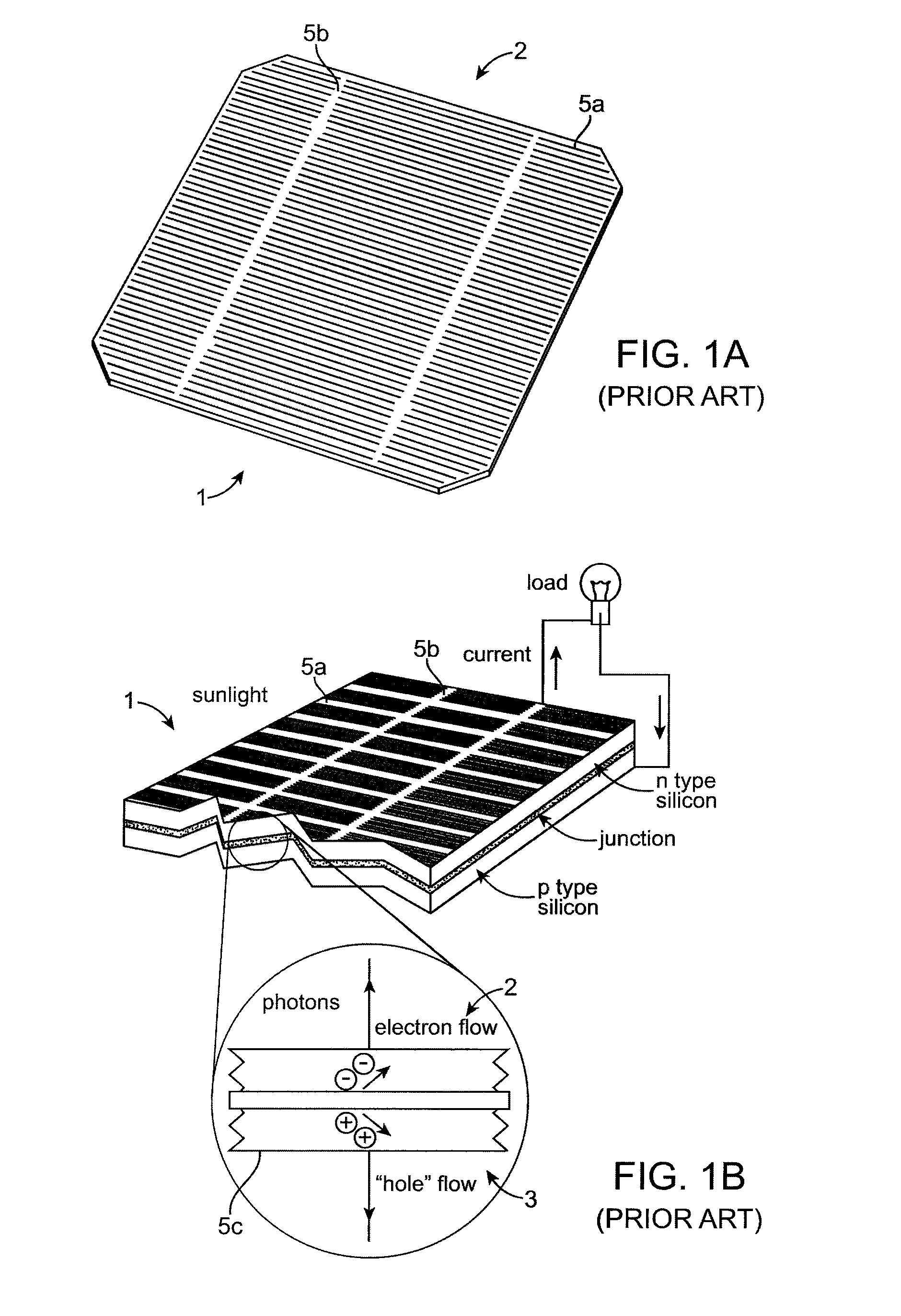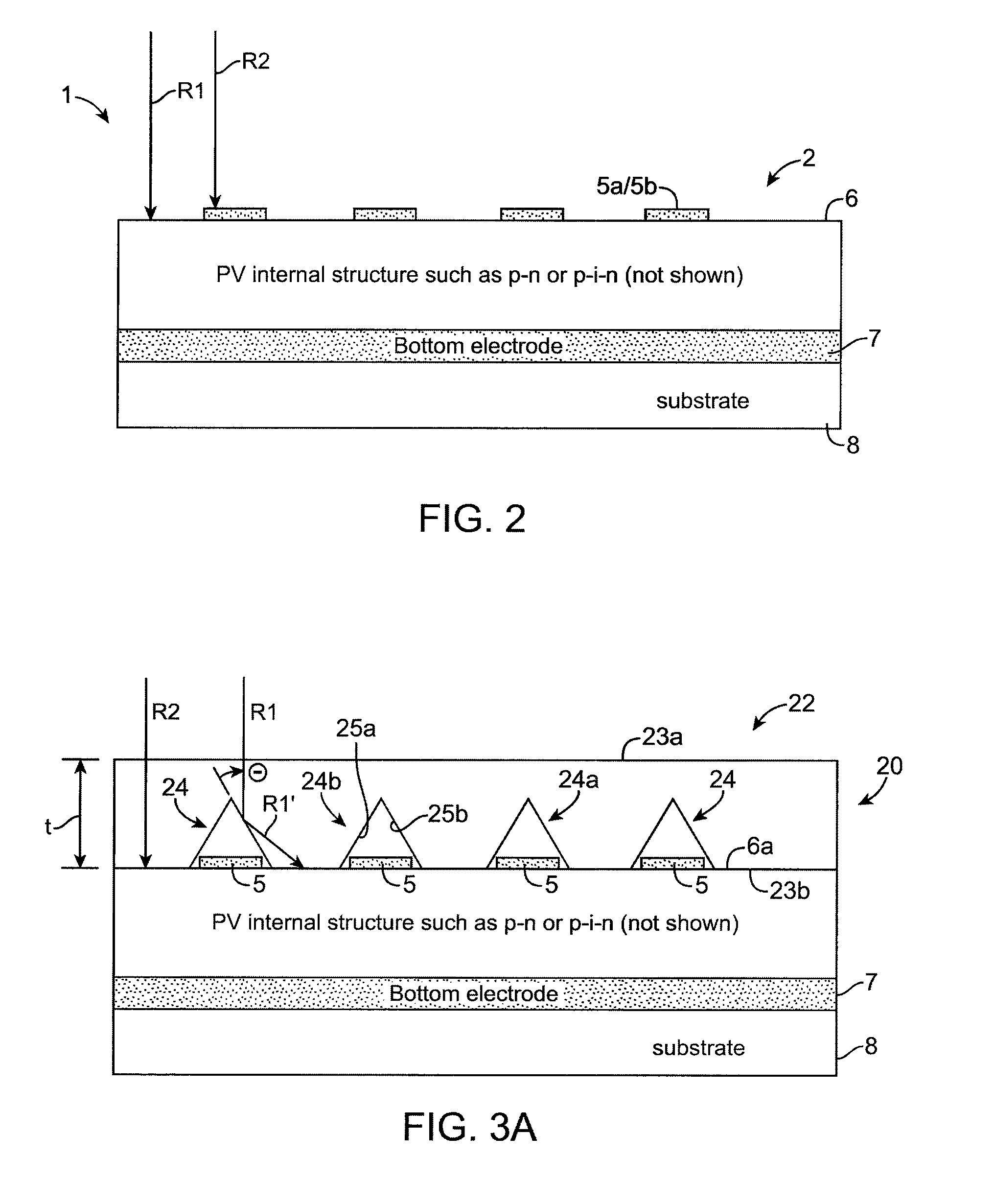Solar energy collection devices
a solar energy and collection device technology, applied in the safety of solar heat collectors, pv power plants, light and heating equipment, etc., can solve the problems of 7% efficiency loss due to reflection, limited supply of photovoltaic materials, etc., to improve the versatility and simplicity of solar collection devices, reduce costs, and improve solar energy collection
- Summary
- Abstract
- Description
- Claims
- Application Information
AI Technical Summary
Benefits of technology
Problems solved by technology
Method used
Image
Examples
Embodiment Construction
-21B show portions of the solar collecting element of FIG. 20 according to embodiments with and without additional concentrators, e.g., reflecting elements, positioned adjacent a metal grid for conducting current. The concentrators may be incorporated into the solar collecting element in accordance with one or more of the embodiments discussed in connection with FIGS. 3-4.
[0068]FIG. 21C depicts another embodiment of a solar collecting element including a circular rod lens with attached PV strip. According to these embodiments, a groove may be formed in the lens. The metal grid and concentrators may then be attached within the groove, e.g., with a suitable adhesive.
[0069]FIGS. 22A-22D show ray traces for various embodiments of a solar collection device.
[0070]FIG. 23 depicts an example of a static solar collection device constructed in accordance with the principles discussed in connection with FIGS. 9A-9B.
[0071]FIG. 24A depicts one embodiment of a linear concentrator having unused (n...
PUM
 Login to View More
Login to View More Abstract
Description
Claims
Application Information
 Login to View More
Login to View More - R&D
- Intellectual Property
- Life Sciences
- Materials
- Tech Scout
- Unparalleled Data Quality
- Higher Quality Content
- 60% Fewer Hallucinations
Browse by: Latest US Patents, China's latest patents, Technical Efficacy Thesaurus, Application Domain, Technology Topic, Popular Technical Reports.
© 2025 PatSnap. All rights reserved.Legal|Privacy policy|Modern Slavery Act Transparency Statement|Sitemap|About US| Contact US: help@patsnap.com



